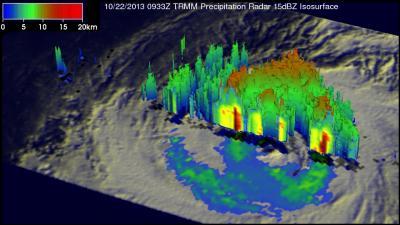On Oct. 22, 2013 Typhoon Francisco was already affecting the southern islands Japan when the TRMM satellite had a good view of its rainfall and cloud heights.
On Oct. 23, as Typhoon Francisco moved closer to Japan's southern islands, the Daito islands and islands of Okinawa (including Kadena Air Base) and Amami-Oshima were all receiving rainfall, gusty winds and strong surf. Those islands are under warnings and facing high waves, gale-force winds, storm surge and heavy rainfall.
